Wine lovers across the country may not know him by name, but they have seen and drank his wines. They are everywhere, from grocery stores to high-end wine shops. Even the wine-curious, that know his many brands, know little about the mind behind some of the most successful wine brands in American history.
My interview of Dave Phinney, labeled by Robert Parker “one of the most talented winemakers of our time,” proved fascinating. Profoundly humble in the most authentic way possible, he is equally resolute and determined in his vision and values.
His story is that of wine-world legends. The firm that he had founded and previously sold to Huneeus Vintners, The Prisoner Wine Company, which includes Prisoner, Saldo, Cuttings, Blindfold, and Thorn was recently acquired for $285 million by Constellation Brands, one of the world’s largest wine companies.
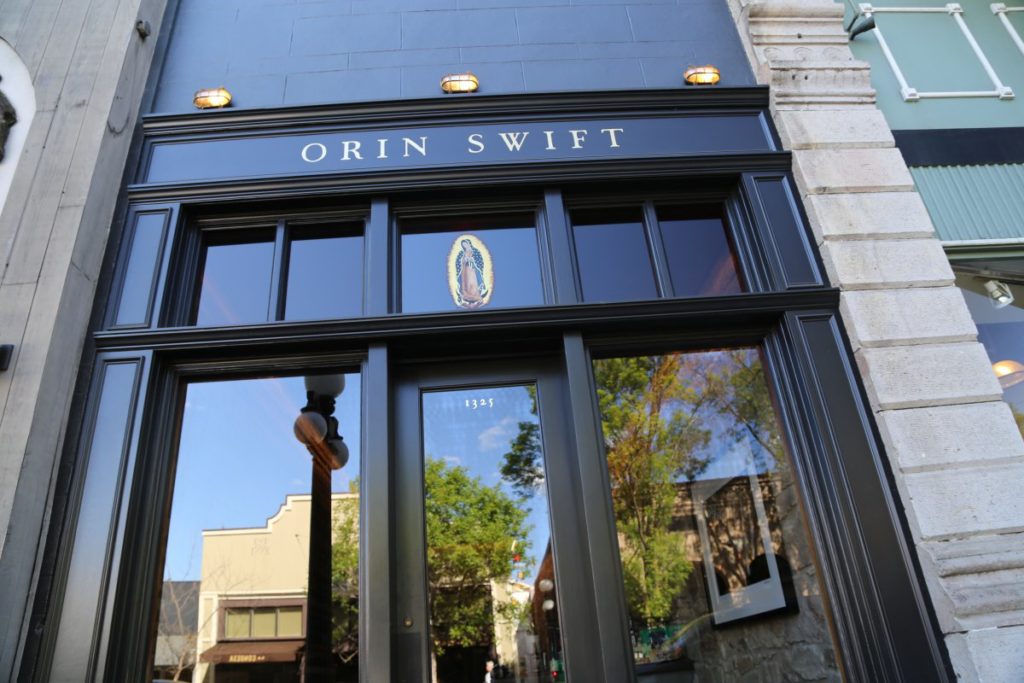
David is similarly content to spend more time tending to the vineyards and the cellar. There was a natural synergy between Orin Swift’s philosophy of humility and high standards and Gallo’s way of doing business, which was at the core of the acquisition.
Many vintners secretly dream of “pulling a Phinney,” yet few come close. What is his secret?
Early On
Dave Phinney comes from a family of notable intellectuals—educators and world travelers, who nurtured their kid’s copious natural curiosity. In their formative years, their parents took Dave and his brother all over the world, exposing them to various forms of art, which later came in handy for Dave. (Even now his 84-year old Mom took off to New Zealand without saying a word to her children.) His mom and late father were and are his stoutest influencers and supporters, in anything from life philosophy to label design.
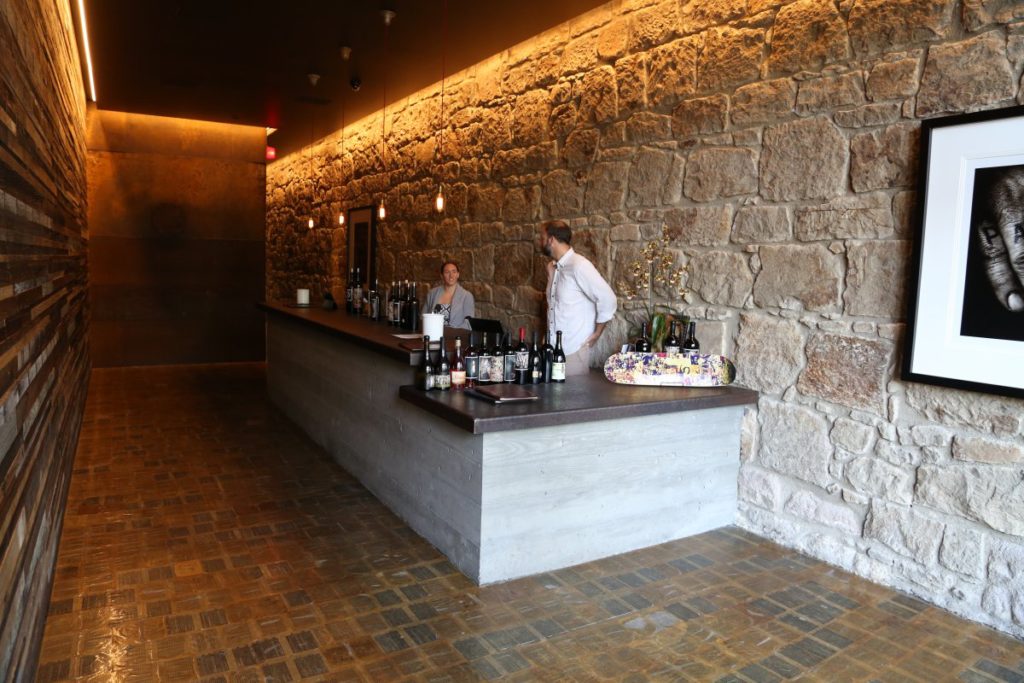
His formative years were spent in Berkeley. While studying political science at the University of Arizona, he traveled to Florence for a study-abroad program. There he fell head-over-heels in love with Italy’s wine and food culture. Many become enamored with the cultural charms of a society that celebrates family and friends; one that embodies the spirit of indulgence through food, beverage and lifestyle. Phinney’s connection dug deeper than he initially realized. His attachment to the world of wine proved to be lifelong. As with most young men worldwide, the goal was to attract as many pretty girls as possible, so Dave and his friends mostly purchased wine in magnums so as to appear more sophisticated. (And to lessen the risk of running out of the social-glue elixir.)
Post-college briefly stuck in a legal job he wasn’t keen on, Phinney made a fateful decision to pursue a trade that gave him those elusive butterflies. His passion for agriculture consumed him; he moved to Napa in 1997 and never looked back. There he ended up sending his resume to over fifty wineries. Only one responded—with a temporary harvest position. Robert Mondavi Winery hired Phinney for a 3:30-1:00 am shift, performing punch downs and pump overs. Fifteen pounds of muscle tone later he sported a new nickname that the all-Latino crew bestowed upon the only white guy in the cellar, “Anglo.”
With encouragement from Mondavi, Phinney made his first wine from half a ton of grapes. Soon after, Orin Swift was born. Orin is Dave’s father middle name and Swift is his Mom’s middle name. The first vintage, 1998, didn’t thrill Phinney, as his fruit selection was from the wrong part of the vineyard.
He soon landed at Whitehall Lane under the tutelage of Dean Sylvester. There, in the tasting room, he met his future wife Kim Leonardini.
Sylvester instilled the idea of palate education and listening to wine. Phinney’s winemaking ambition quickly embraced the holistic approach, focusing on robust aromatics, opulent body and mouthfeel, with the pleasure of consumption at the forefront of his mind. It became less about varietal/vineyard quest and more about experiencing wine. That focus would prove to be prophetic and pivotal—the cornerstone of his future successes.
Blend This
Hallmarks of a true artisan are critical thinking and never resting on laurels. Intensely hard of himself, Dave poked holes and questioned everything about the wine world. He seemed to never be quite satisfied with the wine that he had made—there was always room for more refinement.
He saw wine as a continuum, a progression of balanced flavors and textures. He was convinced that large quantities of consistently delicious wine were far more difficult to make than a small, site-driven production. He studied Gallo, Kendall Jackson, Calera, Caymus, and Stony Hill; pouring over the past vintages of his idols. He quickly determined that these brands establish a precedent, a platform, and build on it. Chasing trends or focusing on vineyard designates wasn’t part of his plan. He became engrossed in creating a balanced product that over-delivered on every level.
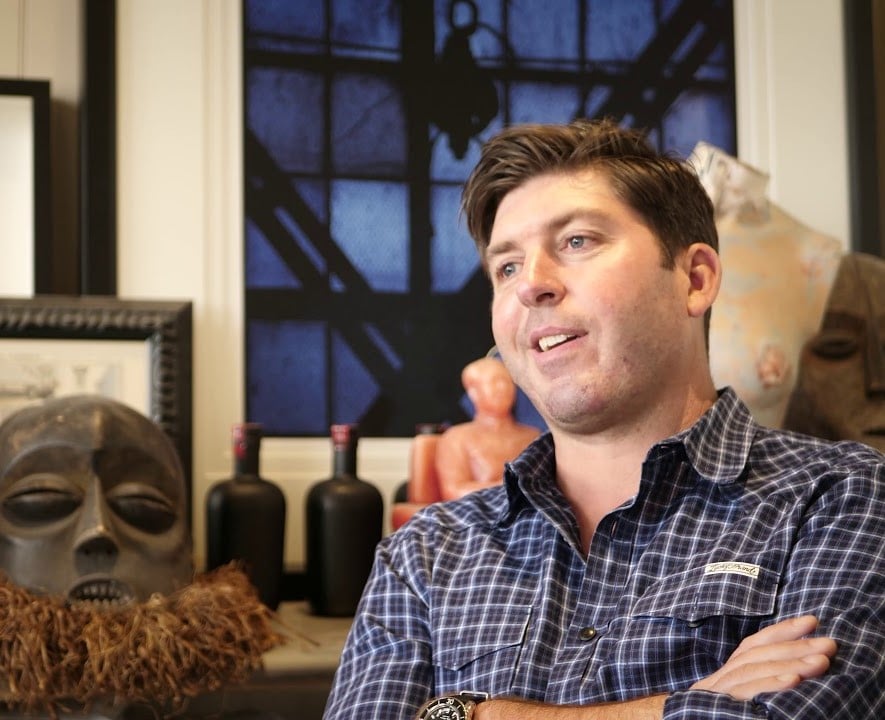
Once the constraints of a singular, site-specific, varietal ties were removed, the sky became the limit and a framework began to take shape. Broader brushstrokes removed the constraints of vintages and appellations and opened the floodgates of creativity. This mental expansion became what’s now known as an optimized, scaled production of the top-selling wines. The more blends Phinney built, the better he got. Obsessive about pick dates, he strives to maintain consistency all year long.
Just as off-season athletes train to maintain top form, Dave flies around the world to continue working out his blending muscle tone. Being exposed to other places and other ways of winemaking around the globe on the consistent basis inspires his creativity. He narrows hundreds of lots down to precious few. Again, this isn’t about the varietals per se, but discerning how cohesively they work together and complement each other. Even what mere addition of 1% can do to a blend is stunning. His goal was and remains a consumer-friendly wine that is sophisticated and balanced from a literal and hedonistic standpoint.
His lesson learned: Free yourself to blend across varietals and geographies of all sorts. Forget tethering yourself to the ever-prized piece of terroir. Distinguish yourself by blending Tannat from Mendoza with Merlot from Sonoma. Blends are not about cheap sources of grapes, they are about achieving the best flavor and texture. In the highly competitive wine business, you must strive to be both different and the best, all at once. The brightest example of that is Phinney’s most recent project, Locations (http://www.locationswine.com/), that embraces that philosophy along with consumer-friendly price points.
As with all “overnight” success stories, it took time and a little bit of luck. And above all, it took a gargantuan effort to do the right thing every time, within the framework of the overall vision. That meant no cutting corners on the integrity of fruit sources, enduring harsh economic realities of a cash-draining business and creating everything on your own; all while tackling pre-internet woes of marketing.
Partnership with the Consumer
Phinney believes that he has a fiduciary responsivity, an obligation to the consumer to overdeliver the highest quality of wine from all angles: from outside—packaging, glass, label, to its contents. You can’t control what Mother Nature delivers to your doorstep. But you can control what you do from there, and respect consumer dollars. Highest quality for the price isn’t driven by the price.
Phinney’s ethos became creating a wine package that shouldn’t have to be sold, that speaks for itself. It wasn’t about trying to find the right price point, which, according to him, can be $20 or $200, depending on circumstances. It was about value-added.
Label That
One of his winning strategies became re-thinking label design. Phinney saw the consumer as being left out of the loop and wanted to make the label’s artwork about stimulating their interest. This approach, combined with inspiration from one of his favorite wineries, Sine Qua Non, set him on a path that proved to be prodigious. Everyone told him that his unusual, bold, thought-provoking and erudite label-art would bomb. Yet, he had the courage to trust his gut instinct. His love of graphic arts, especially photography, served him well. He had a keen eye for intense graphic impetus and was ahead of his time, betting on the visual appeal that would engage wine buyers. His theory is that, if the label peaked the customer’s interest enough to pick up the bottle, half the battle is won. (Studies show that they are 50% more likely to buy.) Again, not the trends, age or demographics made the difference. It was about designing something with universal appeal, whether a millennial or a baby-boomer saw it.
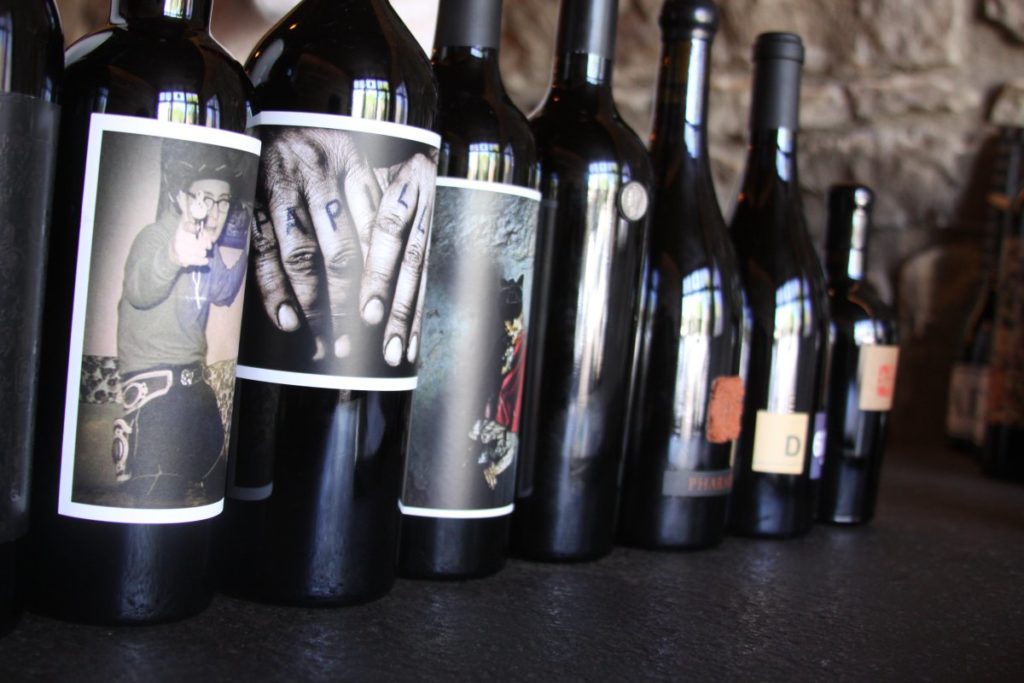
To this day, it’s a constant, ever-evolving process. As Phinney flies around the world, he collects art and design magazines, tall stacks of which are spotted everywhere in his spacious office space in a historic wine country building.
Instant gratification doesn’t reside in the business of wine, a sentiment missed by many entering the trade. The harder you work, the luckier you get, according to Dave.
Success came with the release of 2000 Prisoner release. Orin Swift brand continued to develop over a period of a decade. With no social life for years and subsequent sparse time for family life, David’s biggest challenge was learning how to delegate. Married, and a father of two young children, running his empire left little room for downtime. Becoming a demanding, but fair administrator, proved to be the answer. He learned to empower his small, but fiercely dedicated staff. Yet, ultimately, the final judgment and responsibility are his and his alone.
Land, Not Brand
Over time, David built stellar relationships with his growers. An average grower has been with him over an 8-year span; some have stayed for decades. Timely payments and old-school handshake deals where your word is golden cemented an atmosphere of total trust.
In an uncertain age of brand proliferation and major consolidations by mega-distributors, one constant unshakable reality remains: Land cannot be multiplied. Therefore, the ultimate passionate attachment of an enormous, multi-faceted branding authority called Dave Phinney isn’t his brand. It’s his land and land conservation. He is the happiest walking riding in solitude on vast swaths of his vineyards or cattle ranches, breathing deeply and taking in the views.
He is committed to multigenerational thinking and all that it entails. To that end, he has acquired vineyards in Chiles Valley, Santa Barbara County, France and Spain. He even purchased Vermont acreage, where he vacations with his family. He plans to make mouthwatering Maple syrup there.
He is also about to build yet another brand from scratch with his project on Mare Island historic corridor. He leased six buildings which will be home to new distillery. Of course, he will bring his meticulous processes by growing his own custom, heirloom varieties of corn, rye, and sugar cane. The water source for the production will come from springs in Alexander Valley. He will finish the spirits in top-notch wine barrels.
Deduction
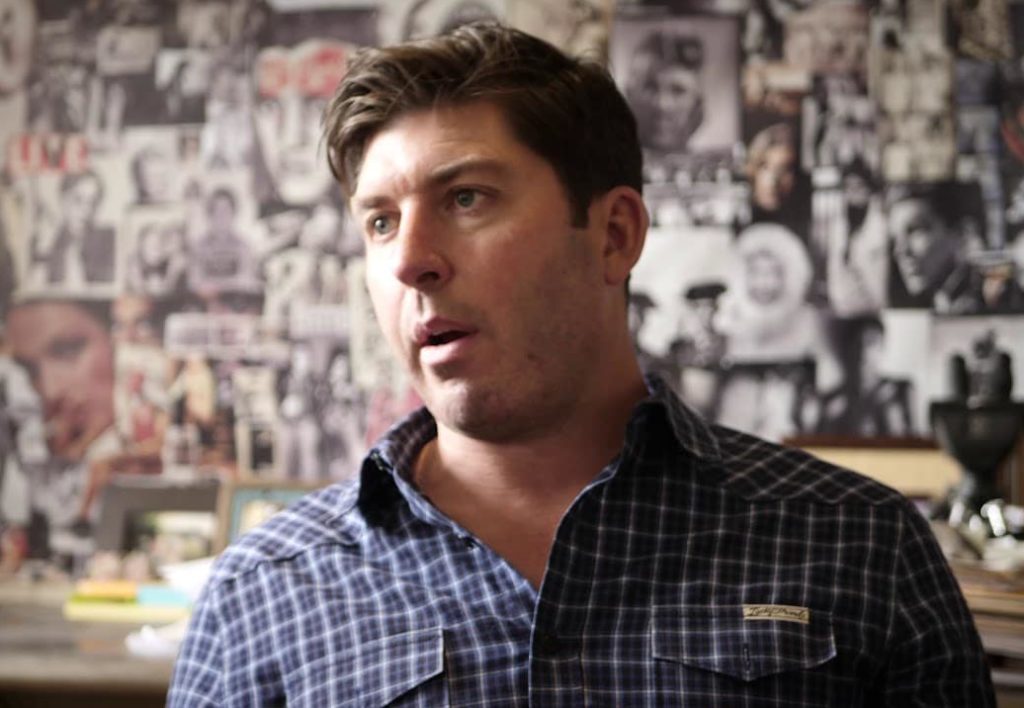
His ultimate advice—get excited, choose what you want to do and love it with abandon. Many in the wine business use scores as a measure of success. Although scores certainly are a measure of the wine quality, they are only a tool, not the ultimate determination. Developing mindfulness and vision and having the courage to build, implement, and stick to it are symbols of Phinney’s success.
That’s a mind worth studying.

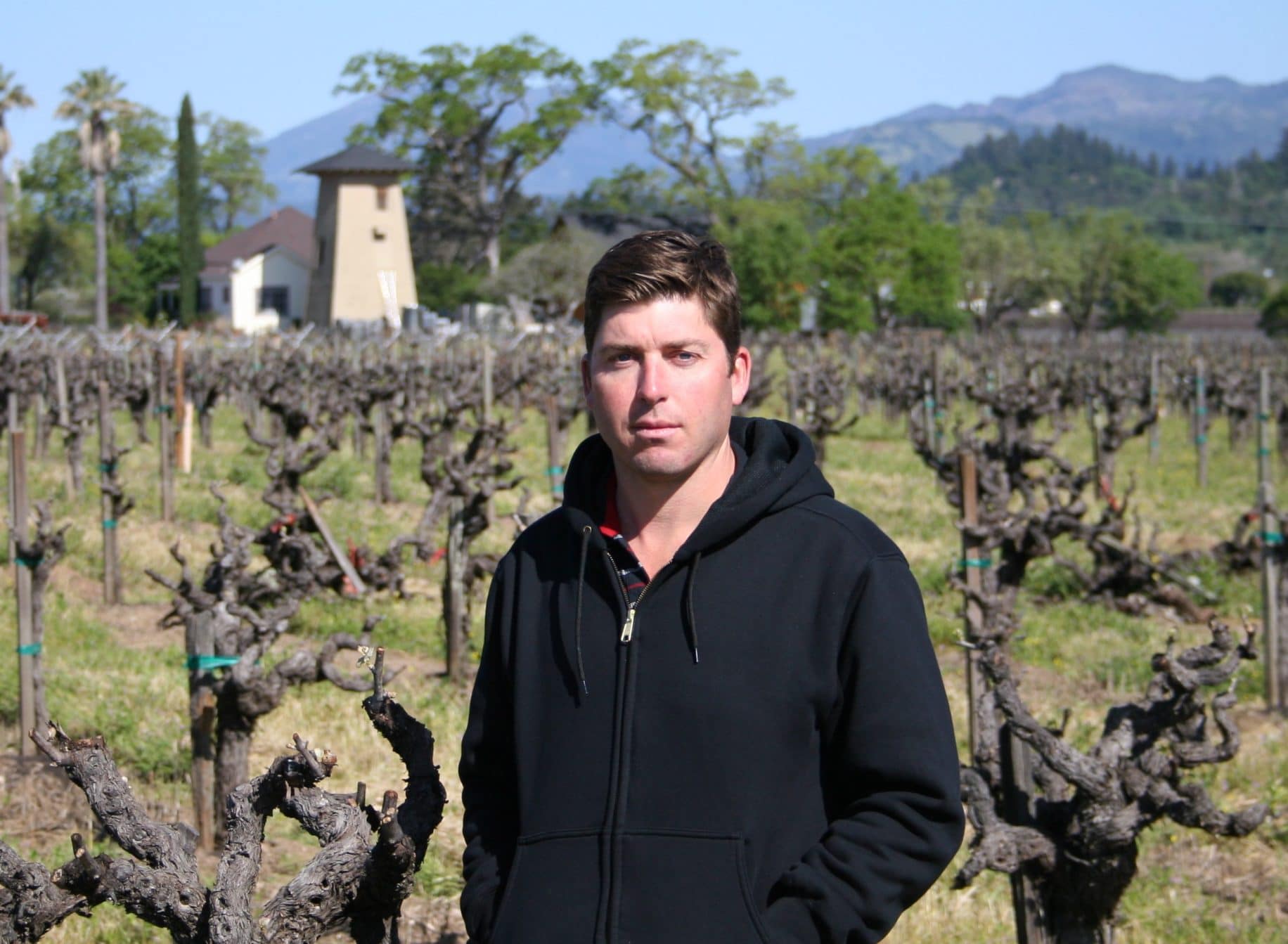

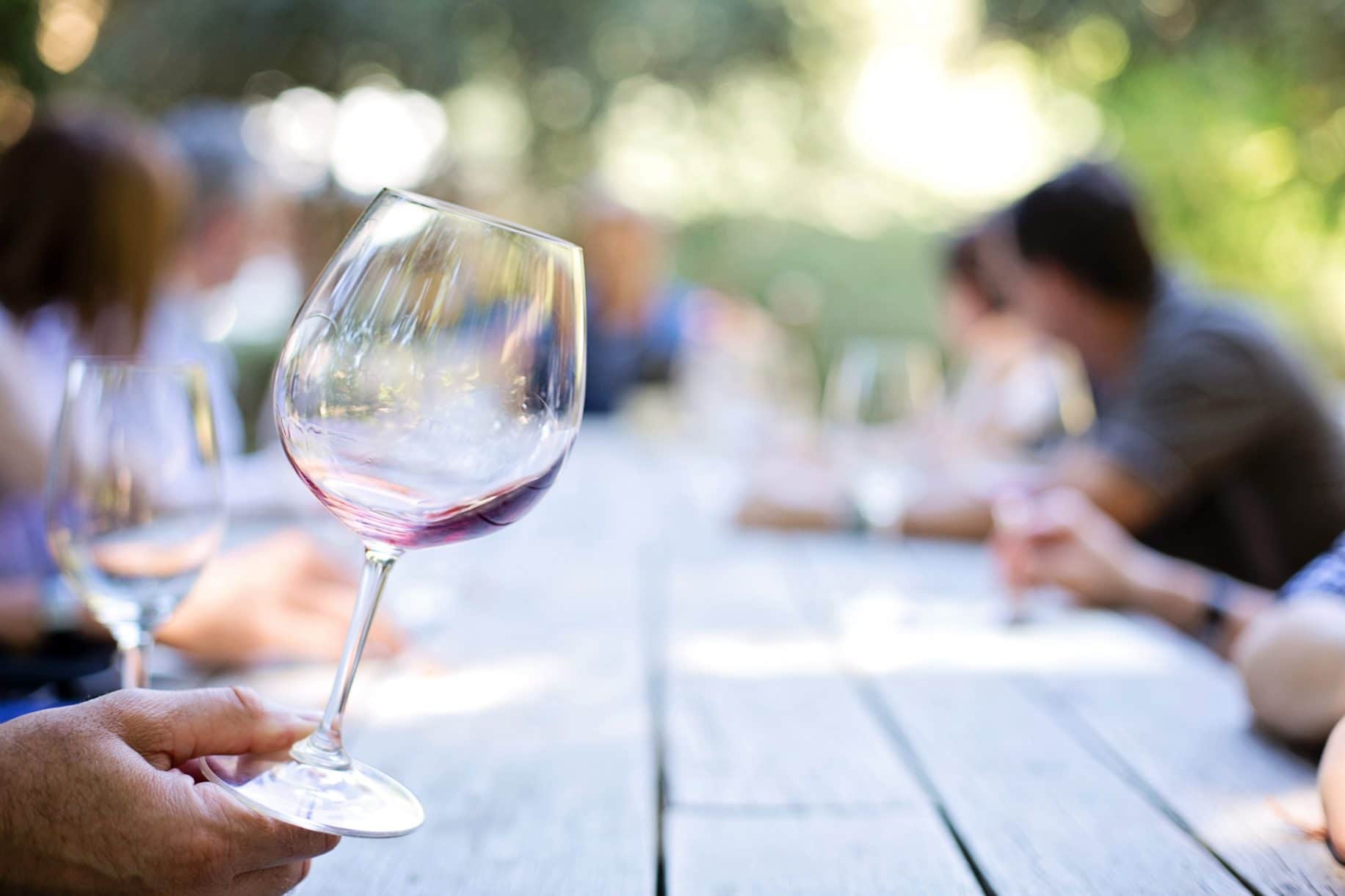

You must be logged in to post a comment.